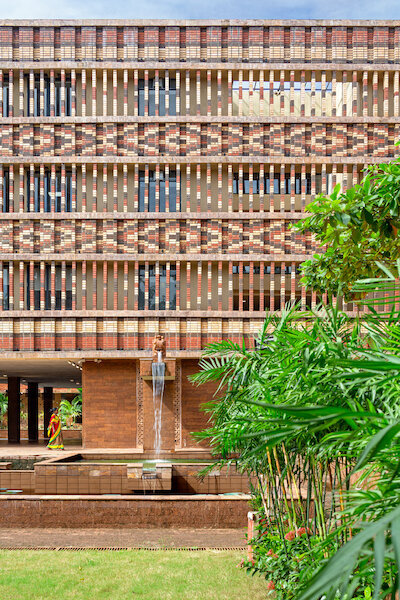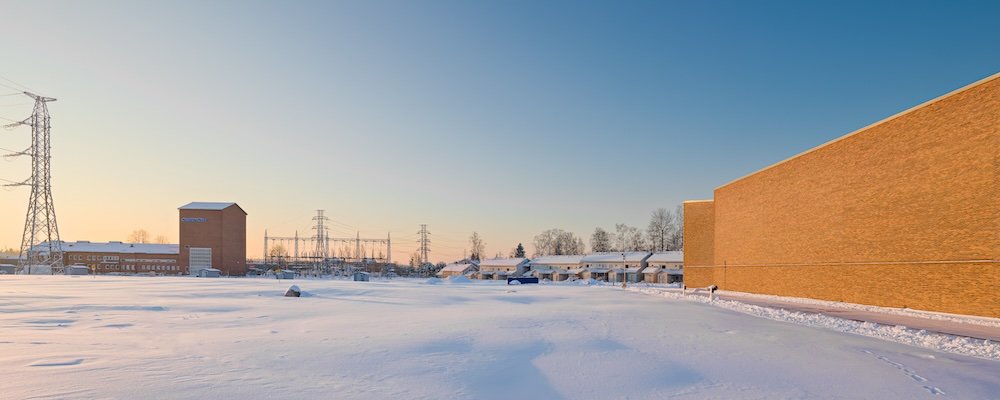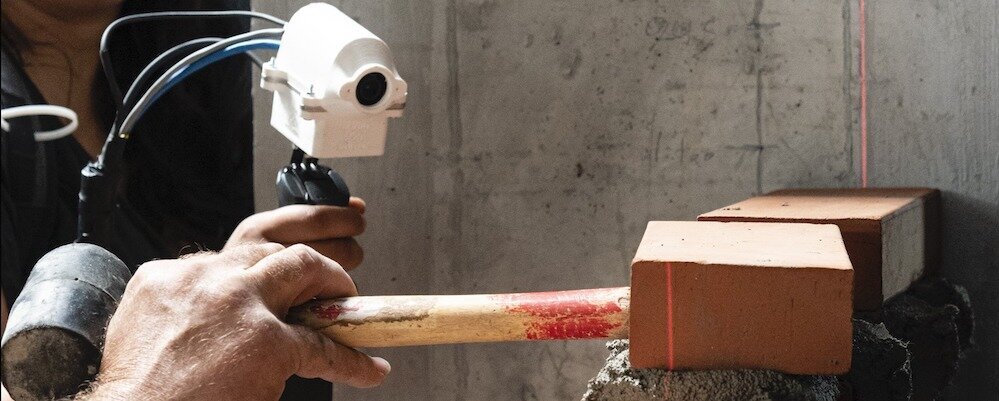#BrickWeek 1 - Krushi Bhawan
For indoor or outdoor, for humble shelters or sophisticated homes, bricks are providing solutions for every architectural need. Today’s project involves bricks of course but much more by supporting local craftsmanship too.
Season One, Episode Three: India.
In Bhubaneshwar, the state capital of Odisha, India’s third largest contributor to grain supply, Studio Lotus completed a fascinating building for a public use.
Krushi Bhawan is a government facility that re-imagines the relationship between the state and its people. It hosts Odisha’s Department of Agriculture & Farmers’ Empowerment; the 12,000sqm administrative centre has been designed as an office for a team of nearly 600 people, in addition to accommodating spaces for community engagement and learning.
The new campus sits adjacent to the old ministry office with several ancillary structures of power in the vicinity, such as the Police Commissionerate Building and the State Guest House.
Initially planned as a purely administrative space, Studio Lotus convinced their clients to implement what Otto Königsberger‘s original vision was for Bhubaneswar with its Capitol Complex hosting government offices as “a lively point of public life”.
For this reason, the ground floor is a free-flowing public space that opens out into a plaza by the street. Congruent to the project objective, the ground floor comprises of a learning centre, a gallery, an auditorium, a library, and training rooms. Similarly the roof top has been designed to house urban farming exhibits and demonstration of agricultural best practices.
The offices for the State department and Directorates have been placed on the first, second and third floors.
This allows the offices to be secured off, making it possible to keep most of the other facilities open to public even on holidays.
Through exhibitions, workshops, haats (weekly markets), lectures and school visits, these public spaces become a hub for imparting skills and sharing knowledge that engage diverse sections of the city’s population.
As befits the climatic conditions of the region, the design scheme for Krushi Bhawan consists of a central courtyard that opens through a series of colonnades into the public plaza.
A garden with native Flora features an informal amphitheatre and a pond that cools the forecourt. The primary entrance pathway is lined by laterite lattices and trees, and performs multiple functions – from a common area for employees to congregate in and eat together during lunch hour, to a place for hosting small gatherings.
The distinct visual identity of Krushi Bhawan has been derived from regional materials and vernacular narratives, expressed in a manner that is responsive to the local climate. Over 100 highly-skilled artisans have come together to create a contemporary narrative of traditional Odia craft depicting agricultural folklore and mythological stories, envisioned at an unprecedented architectural scale. For instance, the tribal craft of dhokra (cast metal craft) has been adapted to make light fixtures that wrap around the ground floor columns, as well as metal screens that line the building corridors.
The pedestal level and North Wing use locally-sourced laterite and khondalitestone. Hand-carved khondalite lattices provide a sense of enclosure to the Central Court. Similarly, agricultural motifs have been displayed across the building through a variety of craft techniques – such as the bas-relief carvings in laterite along the Public Plaza, which depict ripe paddy crops illustrated in the Odia Pattachitra (cloth-based scroll paintings) style. In the Central Court, a Crop Calendar has been created on a stone inlay floor, which displays the harvesting cycles for the most prevalent crops in Odia farmlands.
The upper floors of Krushi Bhawan feature a distinctive brick façade inspired by Ikatpatterns of Odisha handlooms, created using clay in three different colours that represent the geographical diversity of the region. This brick-louvered screen wraps around the building like a second skin.
Indigenous passive design strategies contribute to the sustainability parameters of the building. The courtyard morphology and the inclusion of a stilt level aid optimal air circulation through the building, whereas the low window-to-wall ratio and deeply recessed windows and balconies help lower heat gain.
The building profile along the Central Court is characterised by staggered masses which enables self-shading and blocks direct glare. The use of locally-sourced materials has also lowered the carbon footprint of the construction process. The façade has been designed to ensure 100% daylit internal spaces. Further, a double-skin facade strategy has been put in place at the complex, a system that reduces heat gain to 40% by regulating ingress of sunlight.
Bhubaneswar experiences significant drops in night temperatures through the year. Taking this into consideration, a simple Night-Purging system has been devised for cooling and ventilation. Through this mechanism, cool air gets pulled into the building through the northern façade when temperatures drop at night, by means of a custom designed ‘low-tech’ damper system.
The high thermal mass of the building traps the ‘coolth’ and becomes a ‘coolth’ exchanger with the surrounding air in the day, when outside temperatures are higher. Consequently, the building achieves high thermal comfort for its users while cutting down the need for air-conditioning via HVAC systems to only 20% of the built spaces. Other interventions include solar panels on the terrace, on-site rainwater harvesting and wastewater treatment, and an anaerobic bio-digestive solid waste management system which generates compost and fertigation water for the landscape.
Pictures by Andre Fanthome and Sergio Ghetti.

















